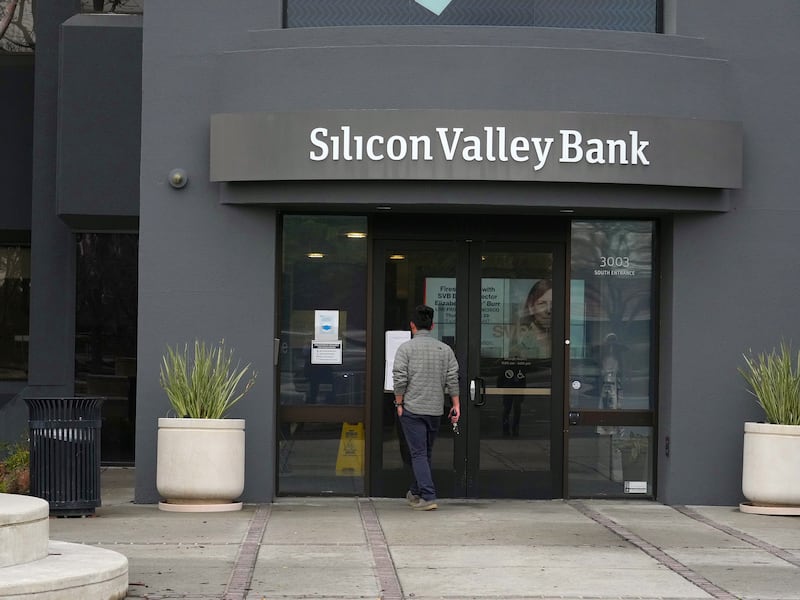Investors are betting that the fallout from the failure of the Silicon Valley Bank will force the Federal Reserve to back away from further aggressive interest rate rises, with markets now pricing in an outside chance that the US central bank will pause its monetary tightening altogether later this month.
Futures markets now suggest odds of roughly 85 per cent that the Fed will opt to raise interest rates by a quarter percentage point to a target range between 4.75 and 5 per cent later this month, according to Refinitiv data, with a 15 per cent probability that the US central bank leaves rates unchanged.
Goldman Sachs said on Monday that it no longer expected an increase at the Fed’s meeting ending on March 22nd “in light of recent stress in the banking system”.
The shift in markets is a stark turnaround from last week, when investors thought a 0.5 percentage point rate increase was the most likely outcome after Federal reserve chief Jerome Powell responded to recent signs that US inflation remains stubbornly high by saying that the Fed was prepared to return to bigger rises.
Investors piled into US Government debt in response, with the two-year Treasury yield, which is especially sensitive to interest rate expectations, falling 0.25 percentage points to 4.33 per cent. The debt instrument was yielding just over 5 per cent last Wednesday.
[ Deposits protected as HSBC acquires UK arm of Silicon Valley BankOpens in new window ]
The moves come after SVB’s collapse spurred the Fed to announce a new $25 billion lending facility on Sunday, which it said was designed “to help assure banks have the ability to meet the needs of all their depositors”.
[ Collapse of Silicon Valley Bank will be watched closelyOpens in new window ]
Analysts said the measures to contain the fallout amounted to a de facto pause in the Fed’s efforts to tighten monetary policy by shrinking its balance sheet to reverse quantitative easing.

Why are Irish companies shifting their stock listings to the United States?

George Saravelos, Deutsche Bank’s head of FX research, said the new funding facility “can be interpreted as re-establishing a temporary QE programme”.
“This tightening cycle will now be amplified due to stress in the US banking system,” Saravelos said. “The immediate conclusion is that the bar for the Fed to reaccelerate tightening is significantly higher and the likely end point of that tightening lower.”
[ Silicon Valley Bank collapse prompts concerns over banking sectorOpens in new window ]
The rapid collapse of SVB had made market participants “more aware again that the Fed will eventually break something if it keeps raising rates”, said Lee Hardman, currency analyst at MUFG.
The bank’s collapse had also “taken the wind out the US dollar’s sails” by highlighting risks associated with rising rates, Mr Hardman added. A measure of the dollar’s strength against a basket of six international peers fell 0.6 per cent on Monday. – Copyright The Financial Times Limited 2023

